Cypress Point Club
CA, USA
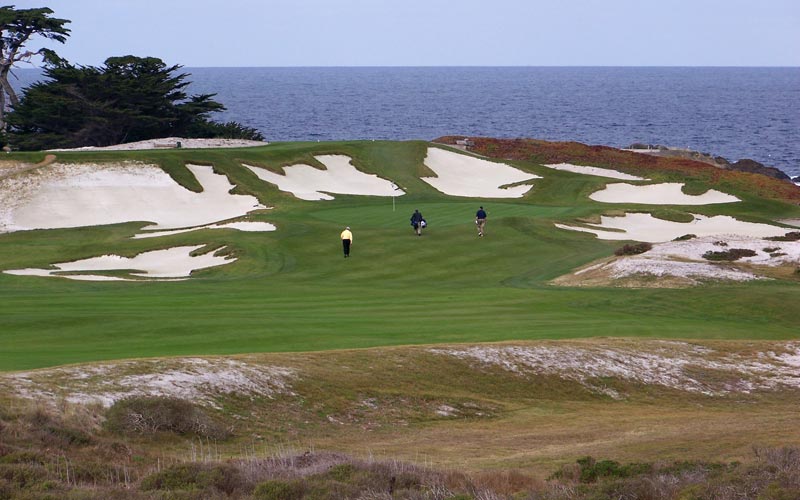
No architect has ever been better at building sub-400 yard holes than Alister MacKenzie and one of his very best is found at the thirteenth at the Cypress Point Club.
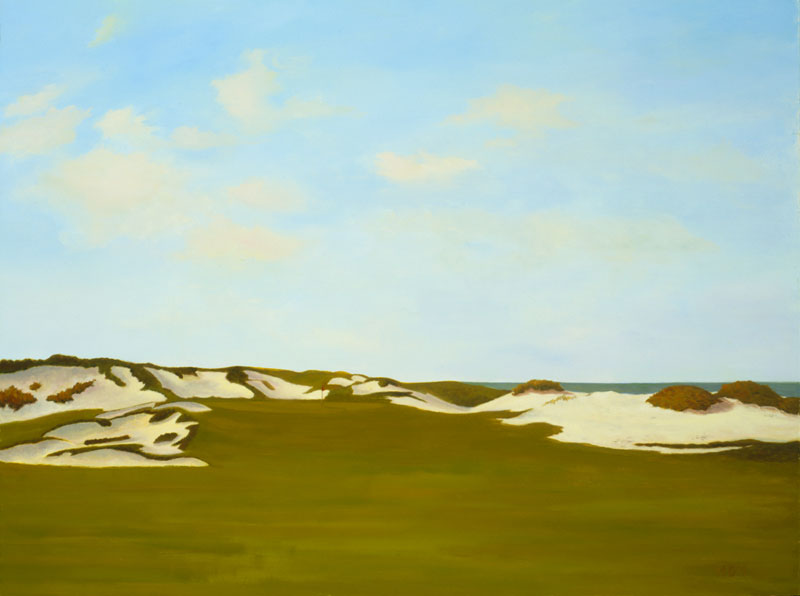
The approach to the thirteenth as captured by artist Mike Miller. Note how MacKenzie’s bunkers left tie in perfectly with the natural sandy area on the right.
Everyone, literally everyone, gushes over Cypress Point. If they didn’t, this website wouldn’t make sense. One of the author’s major contentions is that if a great architect is given a great piece of land, then a great course will follow. And at Cypress, the greatest architect was given his greatest piece of property, after the original architect Seth Raynor passed away.
To gain a true appreciation of this masterpiece in design, Geoff Shackelford’s book entitled Alister MacKenzie’s Cypress Point Club is an absolute must read. Additional minor observations include:
- The influence that Marion Hollins had on this design and its designer is intriguing to note. Similarly, with Alice and Pete Dye. Thus, the finest designer in each half of the 20th century was heavily influenced by a woman. What is to be made of that in what is an all-male business?
- The fact that the golfer walks right and up a dune as opposed to left and up a dune after leaving the sixth green speaks volumes as to how well routed the course is. While many architects might have seen the seventh hole, very few would have found the eighth with its requirement to hit over the shoulder of a dune. Fewer still would have had the courage to follow the 360 yard 8th hole with the 295 yard 9th. With a lesser architect, this three hole stretch would likely never have come into existence, which would have been a crushing blow to the quality of the course.
- The course always feels ‘fresh’ because MacKenzie let the course fall where it may. Consequently, there are back-to-back one, three and short two shotters, as well as a non-formulaic finishing hole. Wonder if architect and MacKenzieophile Tom Doak would have had the courage to build the back nine at Pacific Dunes with only two par fours if it weren’t for the example of Cypress Point?
- The sixteenth is the author’s favorite golf hole in the world, thanks to its unsurpassed beauty, strategic options, and the feeling of being at one with nature. Some speak of the fifteenth in equal terms but to the author (and MacKenzie too), the hole holds but a fraction of the strategic merit of its big brother.

The greatest hole in the world – the one shot 230 yard sixteenth at Cypress Point. No surprise that it’s a half par hole where two tee balls may be intentionally played as far apart as fifty yards in direction.

Cypress Point was built in the day of hickory golf. Indeed, this shot was so supremely terrifying/difficult back then that Marion Hollins had genuine difficulty in convincing MacKenzie to build the hole as a one shotter.
-
The course generated the least amount of criticism when it opened of all of MacKenzie’s work. This is a statement of fact – it may or may not be necessarily good, however. The course has little of the quirkiness of MacKenzie’s favorite course, St. Andrews. The author wonders if MacKenzie toned down his work at Cypress so as not to compete with the splendor of the property. MacKenzie clearly adored Cypress Point and this part of the world. However, would MacKenzie put forward Cypress Point as his most representative work? Perhaps not.
-
In stark contrast to Robert Trent Jones’ routing at nearby Spyglass Hill, the routing of Raynor and MacKenzie creates a superb progression, leading to the unequalled cliff top holes at the end of the round. The view from the ninth tee across the thirteenth fairway. The fourteenth through seventeenth holes follow along – and over – the rugged coastline and make for an inspired (!) finish.
-
The drivable 295 yard ninth hole is in the class of the tenth at Riviera Country Club and the twelfth at St. Andrews – there is no higher class. In a practice round when Cypress was still on the Crosby rota, the author’s brother walked around Cypress with the Great Man. On the ninth tee, Nicklaus hit a six iron down the fairway. He asked his caddie for another ball, pulled out a three wood, and hit it to the front edge of the green. He turned to the group and said, ‘I love the shot but I will never try it during the Crosby.’
-
The striking backdrops to the greens at Cypress did not happen by accident – Mackenzie deserves recognition for the variety of his green placements. The twelfth hole is the finest dogleg hole on the course, not the more famed seventeenth where the cypress tree in the middle of the fairway has over grown to the point where the intended angles of play have been compromised.
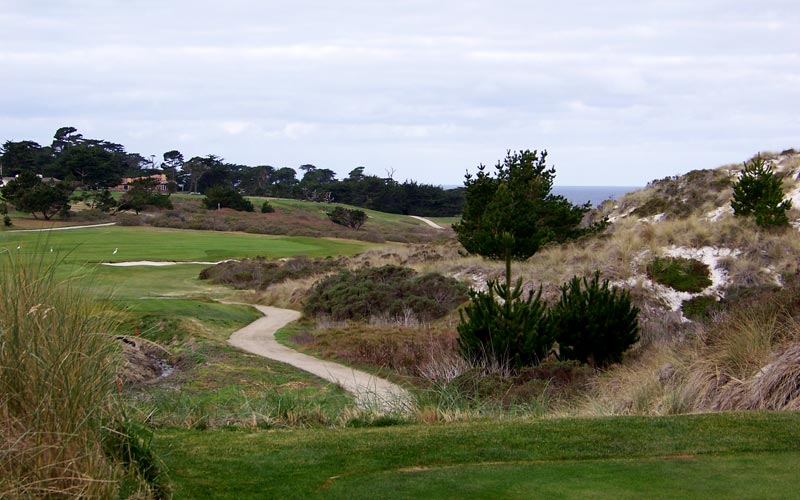
The view from the twelfth tee shows how the fairway flows around the dune to the right.
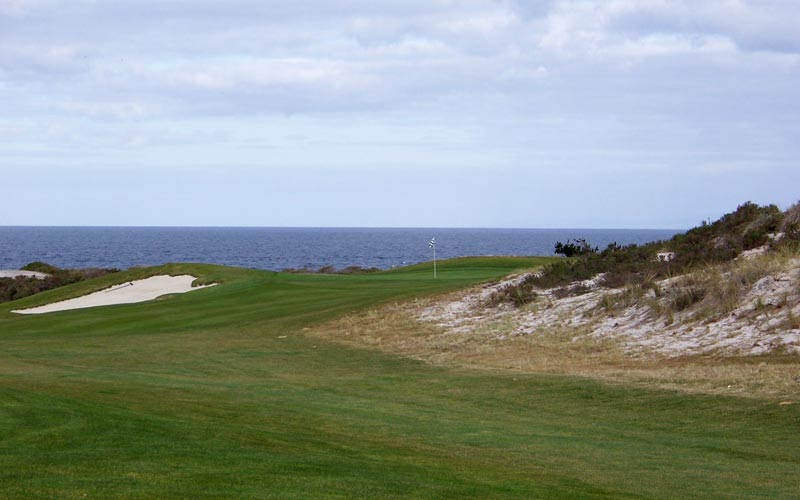
The approach to the underrated dogleg twelfth, where the best angle into the green is from the inside of the dogleg. MacKenzie showed great skill in benching the green into the dunescape.
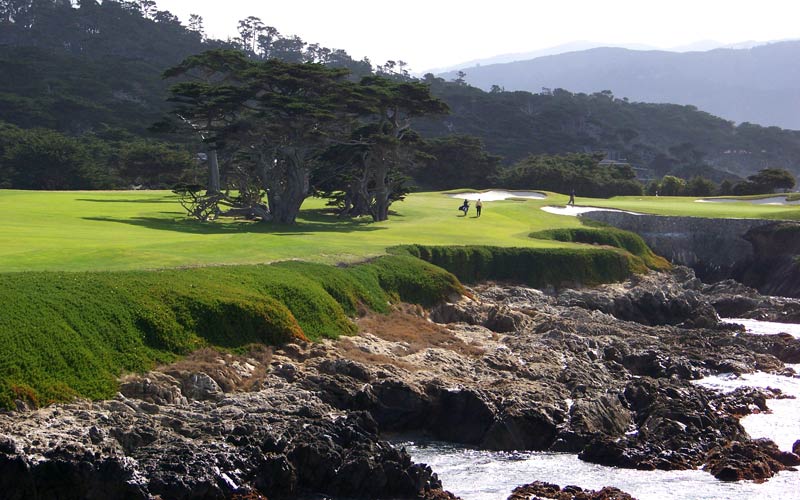
The more famous dogleg at Cypress – the 390 yard seventeenth hole – hugs the coastline with a grove of cypress trees creating a potential dogleg effect.
- No architect has ever built more artistic bunkers than MacKenzie as as no one can tell where nature stops and man’s hand begins. In the entire world, only Crump’s work rivals MacKenzie’s bunker work at Cypress and the West Course at Royal Melbourne.
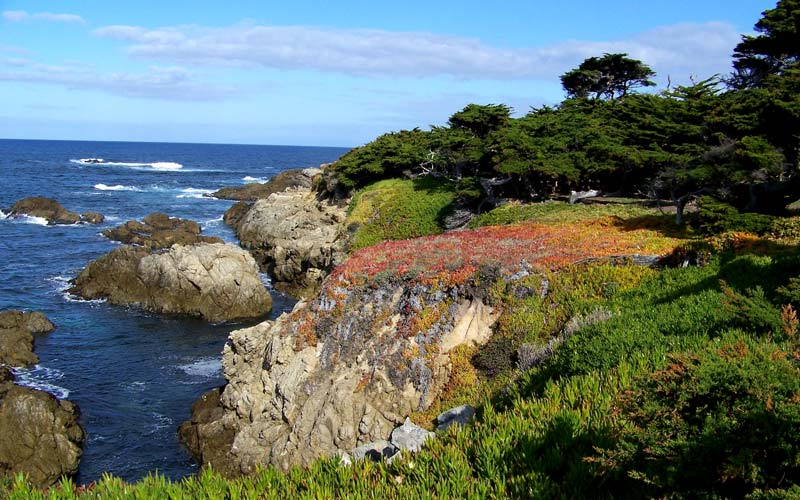
MacKenzie was the first to admit that he enjoyed several natural advantages (!) with his project at Cypress Point.
The End





![The Park, West Palm (Lit 9) [2023]](https://golfclubatlas.com/wp-content/uploads/2024/12/IMG_7092-2-scaled-500x383.jpg)


